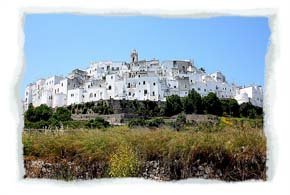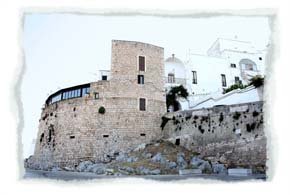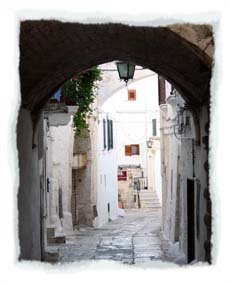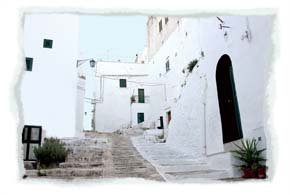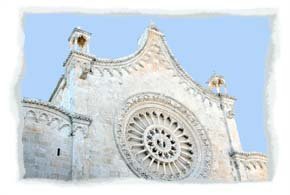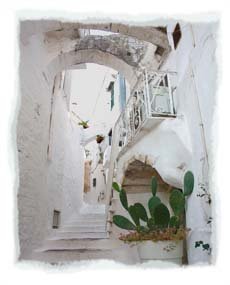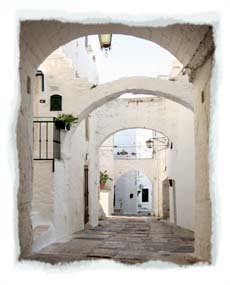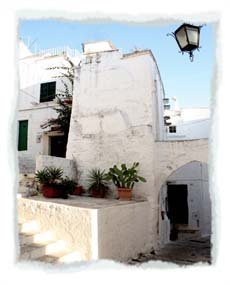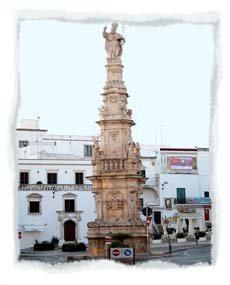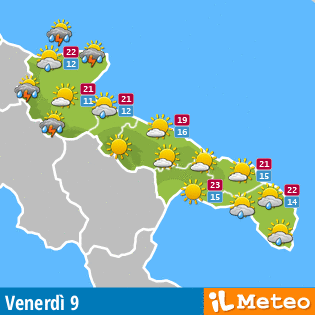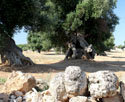Ostuni
Info Ostuni
-
Region:
Provincie:
Municipality:
CAP:
Area code:
Surface:
Population:
city hall:
-
Apulia
Brindisi
Ostuni
72017
0831
225,56 Kmq
31.709
Piazza della Liberta 67
Ostuni, the white town kissed by the sun
Ostuni, famous as the “white town” because of its bright white lime walls, stands on an hill which dominates the sea, at the end of the southern Murgia. It is beautiful with its white little houses, the courtyards and the alleys surrounded by ancient walls with Aragonese towers
It was founded by Messapi, ancient Italic peoples who settled in the Salento in the 7th century B.C. It was a Longobard and a Byzantine town during the Early Middle Ages; afterwards it belonged to the Lecce Earldom, the Taranto Principality, the Sforza family, the Venetians and, finally, to the dukes of Zevallos. The count of Lecce Goffredo III, in the 12th century, stimulated the building of the castle on the highest point of the hill, but nowadays it is possible to see only a tower and a garden of that imposing fortress.
During the Aragonese age, the town was surrounded by powerful defensive walls with circular towers and four doors, of which we can still admire Porta Nova (12th century) and Porta San Demetrio (13th century). During the second half of the 17th century, the area was affected by the plague but Ostuni came out of it undamaged, thanks to the lime used to build houses, which worked as a natural disinfectant.
The lime protected the town and, over the centuries until today, has made Ostuni a magic place. The old suburb said Rione Terra, constitutes the medieval heart of Ostuni, surrounded by walls. Alleys, stairs and arches spread over the white houses and, sometimes, the ochre of the monuments.
On the highest point of the old town centre, stands the 15th – century cathedral. The building works started in 1435 and finished in 1495. The façade is magnificent: it shows late gothic forms, which remind of Venetian and Dalmatian stylistic methods; it is adorned by pilasters and a big rose window with concentric circles and 24 rays, whose dimensions and intaglios make it spectacular. The façade shows three elegant ogival portals.
The interior, with a Basilical plan and a big transept, has been completely renovated according to 18th century forms. The left nave keeps the polychrome wooden altar, realized in 1734, with Saint Oronzo, Saint Biagio and Saint Agostino. In the apse we find a valuable wooden choir made in walnut and richly carved: it dates back to the 17th century.
In the old town centre, divided by via cattedrale, it is possible to admire many noble palaces; it is worth mentioning Zevallos, Bisantizzi, Ghionda, Falghieri and Palnieri, with its beautiful arcade.
In the ex – convent delle Monacelle (little nuns) is situated the Museum of Preclassic Cultures of the southern Murgia; here it is possible to admire Delia’s skeleton, a pregnant woman dead 25.000 years ago.

